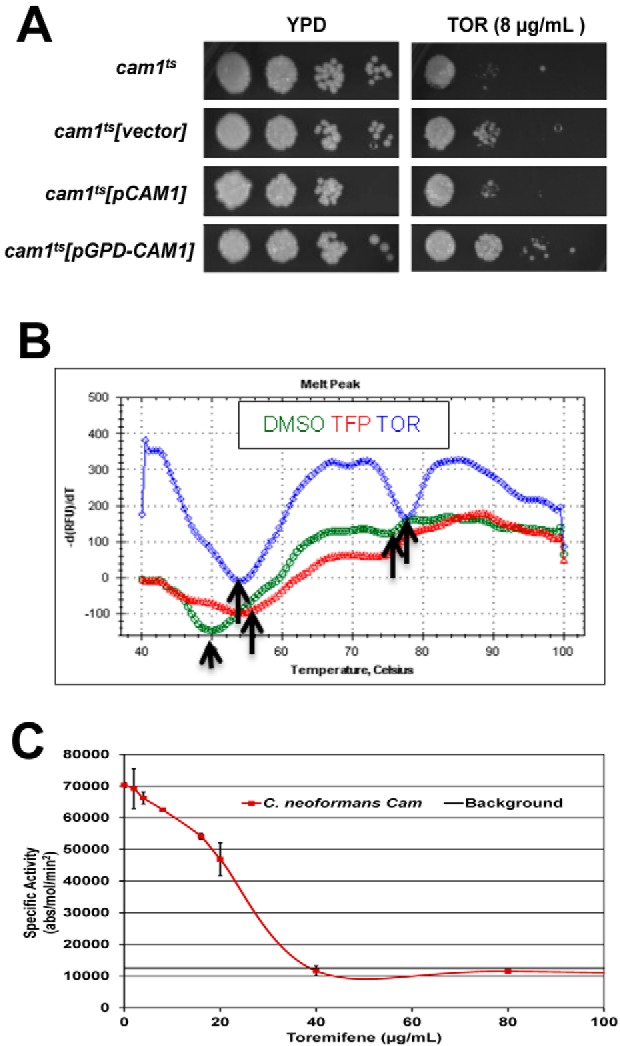FIG 2 .

Toremifene binds and inhibits the function of C. neoformans calmodulin in vitro. (A) C. neoformans strain (cam1Ts) with reduced CAM1 expression (38) was transformed with empty vector, a vector expressing CAM1 from its endogenous promoter (pCAM1), or a vector expressing CAM1 from the strong constitutive promoter GPD1 (pGPD-CAM1). Serial dilutions (10-fold) of a suspension (1 OD600 unit/ml) suspension of cells for the indicated strains were spotted on yeast peptone dextrose (YPD) plates containing DMSO solvent (1%) or toremifene (TOR; 8 µg/ml). The plates were incubated at 30°C for 3 days and photographed. (B) Thermal denaturation curves for CnCam1 in the presence of DMSO (green), trifluopromazine (TFP; red), and toremifene (TOR; blue), as determined by differential scanning fluorimetry. The y axis shows the negative derivative of the fluorescence with respect to change in temperature. The arrows indicate low-temperature and high-temperature inflection points corresponding to the Tm for N-terminal-domain and C-terminal-domain denaturation, respectively. (C) CnCam1-mediated activation of human calcineurin is inhibited by TOR. The specific activity (absorbance [abs]/mol calcineurin/min) of human calcineurin is plotted on the y axis, and the no-drug (DMSO-only) control indicates activation. The dose-response curve was fitted by linear analysis (R = 0.986) to give an IC50 of 25 µg/ml. Three independent experiments were performed with similar results, and results of a representative single experiment are shown. Error bars indicate the standard deviations for technical replicates of each drug concentration.
